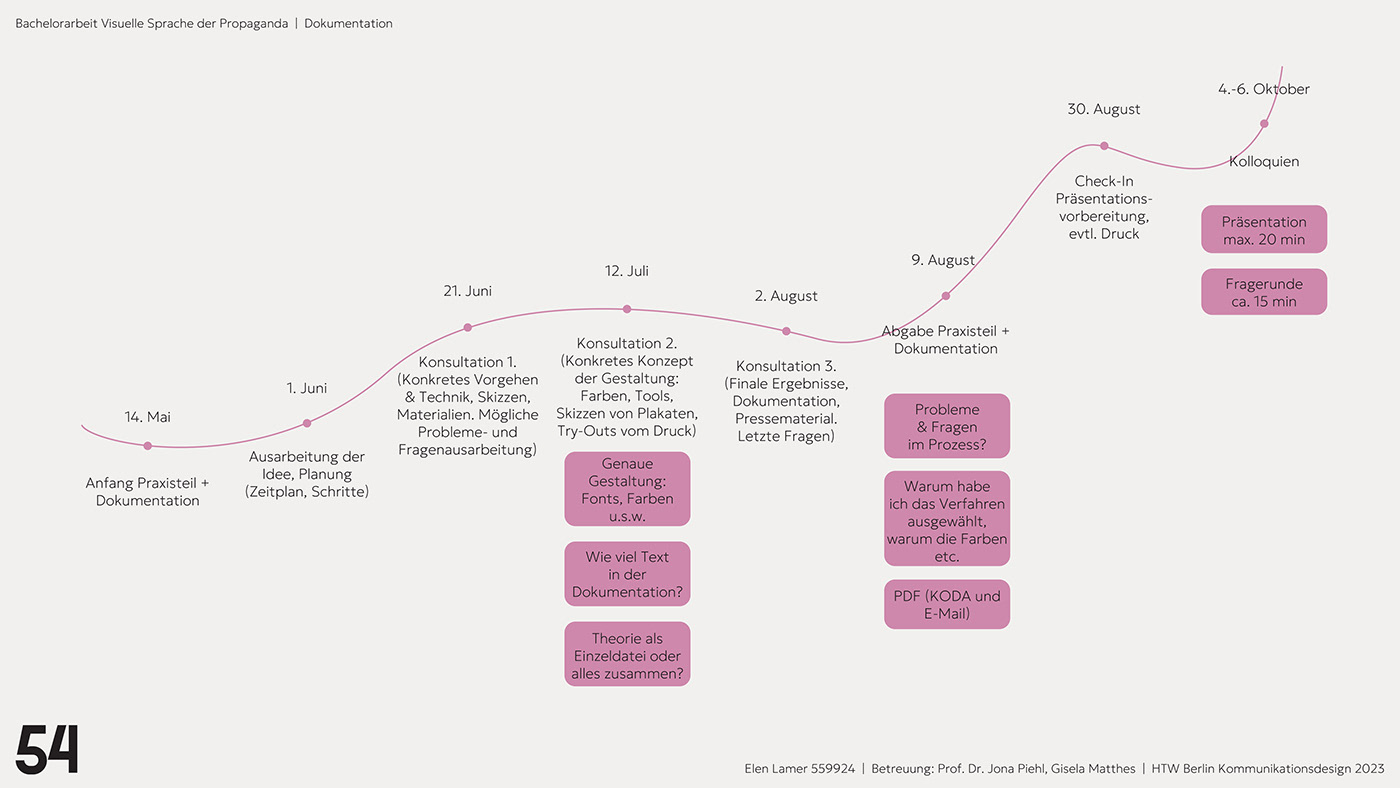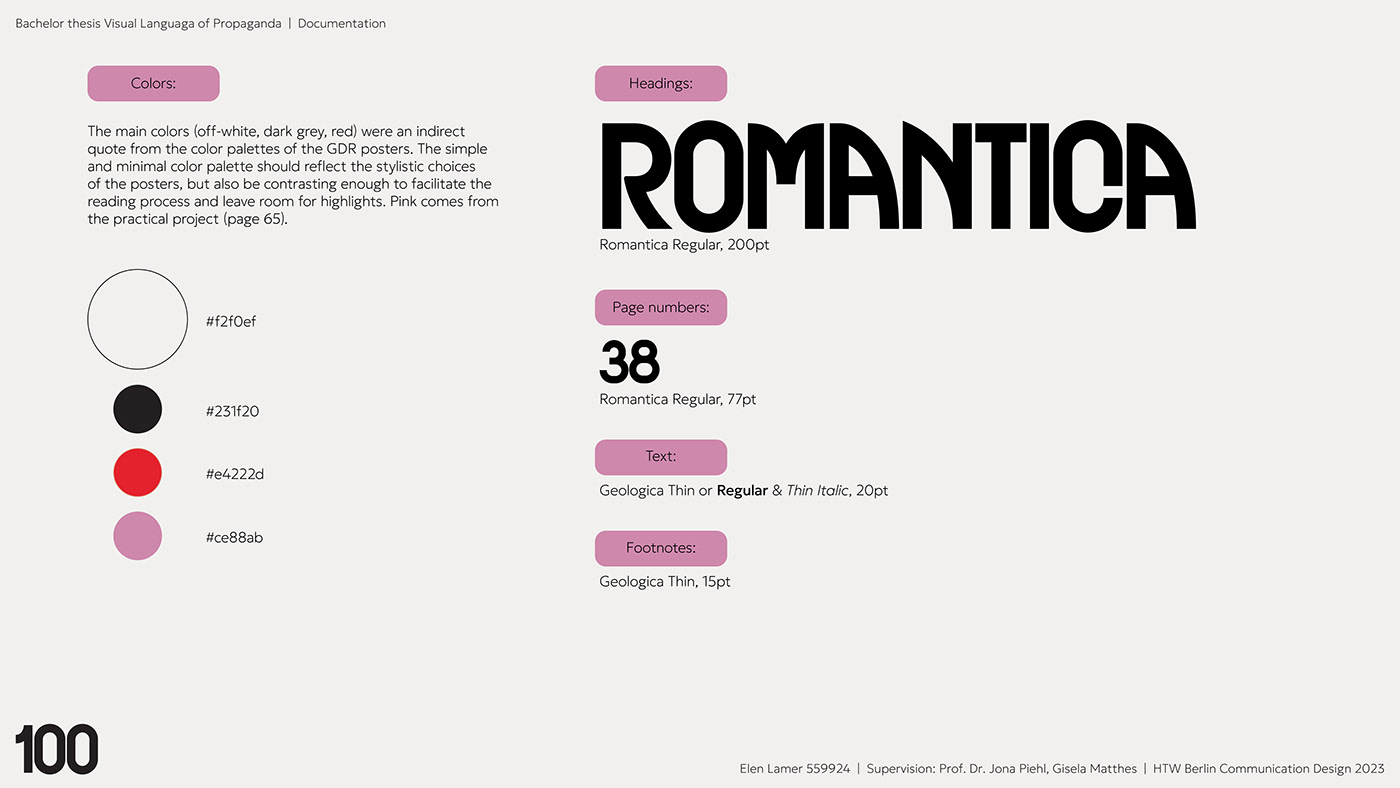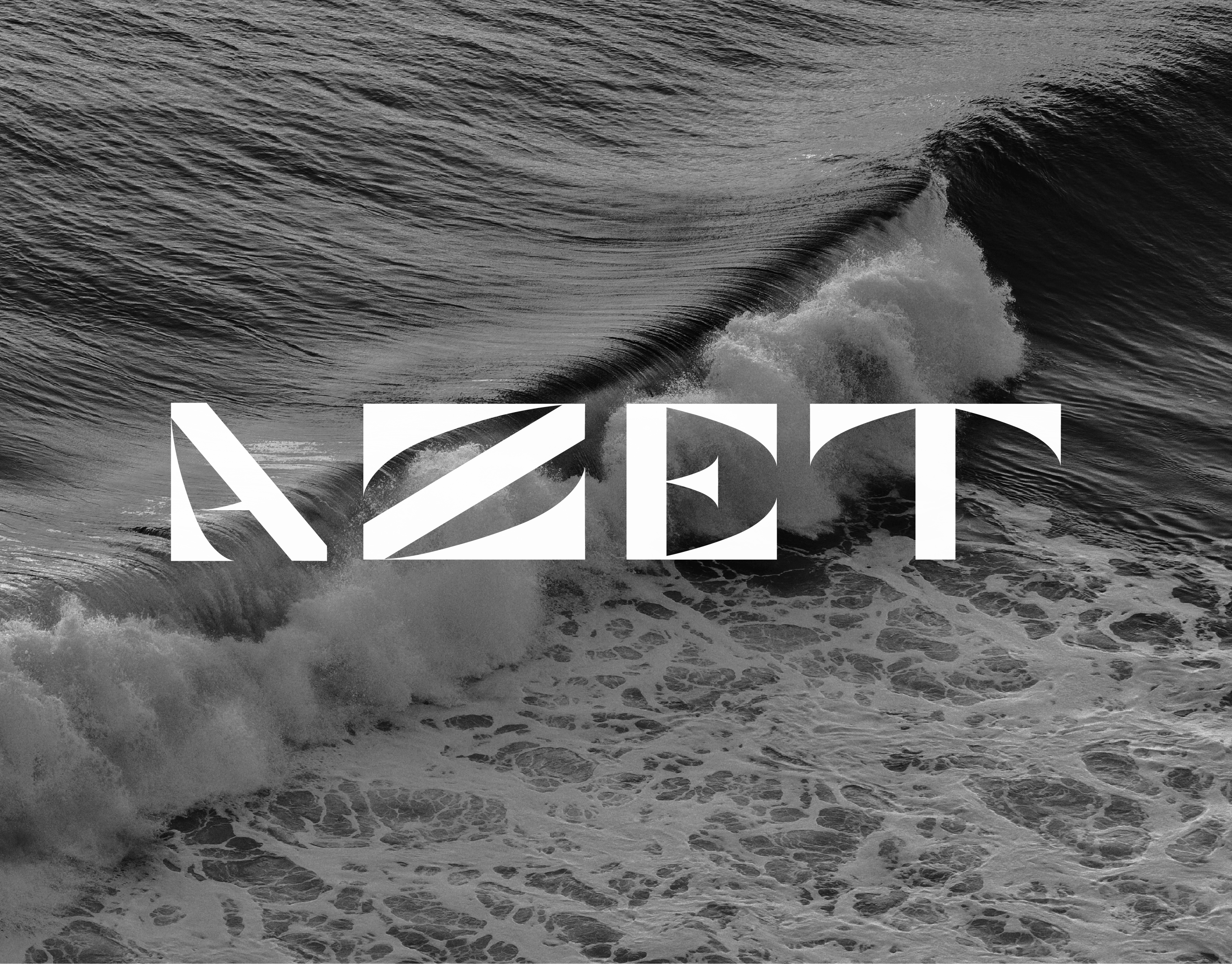Visual Language of Propaganda
The following presentation takes you through the development process of the project for my bachelor thesis "Visual Language of Propaganda". It was created at the University of Applied Sciences Berlin (HTW Berlin), 2023.

The aim of the theoretical part was to analyze the propaganda posters of the GDR in order to find out which visual techniques were used to influence the viewer. The practical part is a project that includes a series of six posters that work with said propaganda tools and explore how they could be used "for good". The practical part is what I am going to present to you in this project, as it is more beneficial as a a part of my design portfolio.

This bachelor's thesis proved to be an amazing learning opportunity and a challenge to the typical perspective, and could be seen as a real, if limited, exploration of what the visual language of propaganda is and how it can be seen in a different light and what it could become.

The idea of the poster series was to shed light on an important political and social issue (starting with victim blaming as an urgent topic, as sexualised and gender-based violence is a problem that unfortunately never loses its relevance). The posters have a "second layer": they have been created using visual propaganda techniques to show that the best way to deal with the dark past is to take what is useful and use it for the better, and to demonstrate the power of design and its inherent neutrality. Design techniques only become meaningful, "good" or "bad", when they are used to convey a particular message.It was an interesting idea to look at such a terrible case of propaganda as something that can actually be used for good and learned from.






"Persuasive Art for Progress" is a name of the project. It aims to use the visual language of propaganda and its powerful techniques to highlight important social issues, starting with victim blaming. the starting point is victim-blaming. This series of six posters uses various visual devices from the analysis of GDR propaganda posters, such as color, shape, contrast, repetition, composition, and text and typography, to challenge harmful narratives and promote positive change.

Obviously, a project of this scale was meant to have a lot of research, and research took a bigger part of the six months we had for the thesis.
Starting point was idea collection and brainstorming, which also came with planing of personas:
Starting point was idea collection and brainstorming, which also came with planing of personas:





Scheduling consultations and work phases was crucial.

And even more brainstorming to decide on the technique for the final posters:

Deciding on a color palette was an important step as well:

Finally, it came to sketching the ideas, which took a lot of work and a lot of variation.




After the final sketches, posters needed to be printed manually and scanned.
All the visuals were printed in black to insure maximal quality and visibility after digitalising.
















All six final posters also come with the same tagline. Used fonts are:

And now back to the final posters.


Some close up details:






As with every big project, here were many obstacles on the way that made the process more difficult. I have summarised them in bullet points that I would like to remember and learn from for my future projects:
1. Lack of clarity about the perspective and the reasons for the project. This is basically the "why" of the project and also the location, target group and personas. In the end, they were extremely helpful in the decision-making process.
2. Not thinking ahead. It helped me a lot to imagine which organization could support my project. I also include the technical side – it was impossible to actually implement the imagined AR filter for the thesis, but it was inspiring to keep it in mind and imagine what it could look like. It also helped to make the project feel real, like it might be in a job where a designer just does their part and then other teams do theirs.
3. Seeing the project as a whole in a vacuum. This also concludes the previous points. The idea of how the project would realistically and concretely work, even if this is not currently possible, was crucial to its creation.
1. Lack of clarity about the perspective and the reasons for the project. This is basically the "why" of the project and also the location, target group and personas. In the end, they were extremely helpful in the decision-making process.
2. Not thinking ahead. It helped me a lot to imagine which organization could support my project. I also include the technical side – it was impossible to actually implement the imagined AR filter for the thesis, but it was inspiring to keep it in mind and imagine what it could look like. It also helped to make the project feel real, like it might be in a job where a designer just does their part and then other teams do theirs.
3. Seeing the project as a whole in a vacuum. This also concludes the previous points. The idea of how the project would realistically and concretely work, even if this is not currently possible, was crucial to its creation.
In my work I used Deepl Translator and Chat GPT to help out with the text part, and Adobe Illustrator, Adobe Indesign and Procreate for layout and design.
Slides you are seeing here are all from my my thesis presentation. Some information on the layout:
Slides you are seeing here are all from my my thesis presentation. Some information on the layout:

Thank you so much for your attention. I also thank my mentors, Prof. Dr. Jona Piehl and Gisela Matthes, for the cooperation and help on the project and the final presentation.
If you have any questions, please don't hesitate to comment!
Yours truly,
Helen
Yours truly,
Helen






